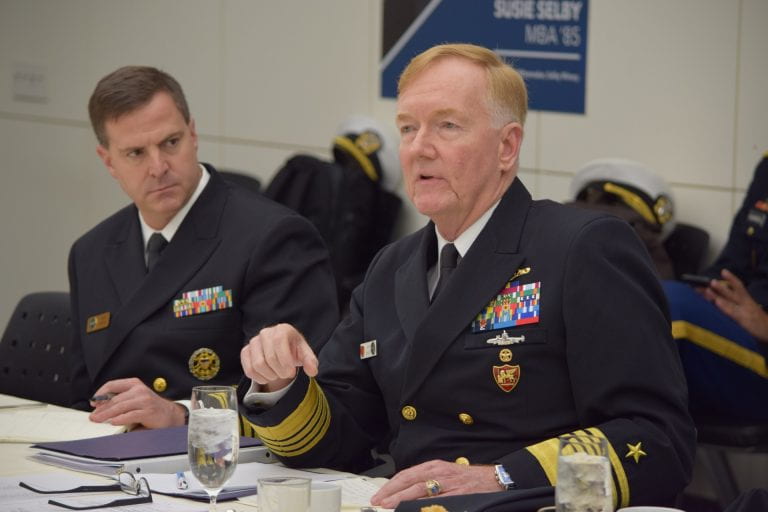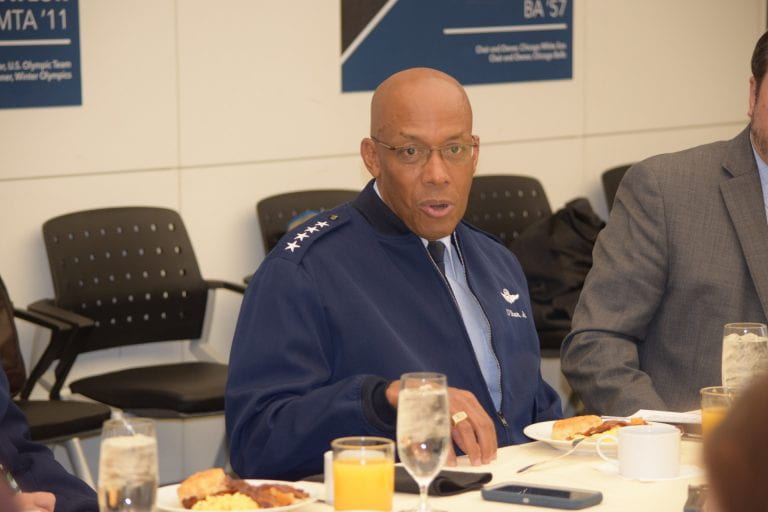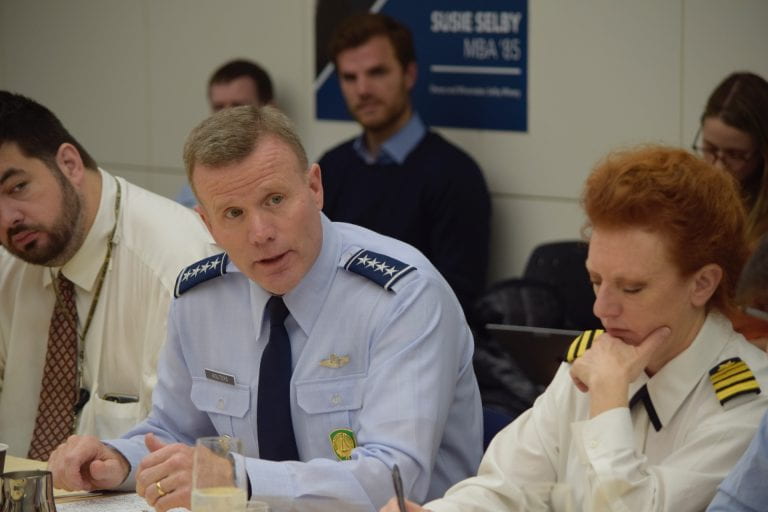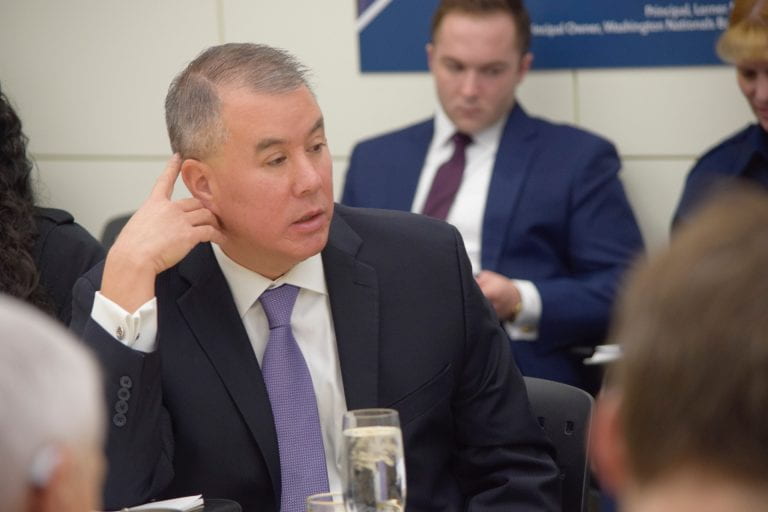Foggo: Russia, China on the Move, From the Arctic to the Med by Otto Kreisher of Seapower Magazine
The commander of U.S. and allied naval forces in Europe and Africa said he is dealing with increased activities by both Russia and China in his vast area of responsibility — which stretches from the Arctic to the southern tip of Africa — despite a shortage of resources.
“We do the best we can with what we have,” Adm. James G. Foggo III, commander, U.S. Forces Europe and Africa, and commander, Allied Joint Forces Command Naples, said Dec. 18.
“It’s an extremely large tactical area” and “setting priorities is the biggest challenge — where do you go,” Foggo said. He must look at the entire theater, which covers all of Europe, the Mediterranean and Black seas, the Baltics, the Arctic and Eastern Atlantic, down to the Cape of Good Hope.
“When there are tensions, you try to go where the tensions are” or respond to something that might threaten allies. “You have to be flexible, agile.”
A career submariner, Foggo said the Russians are operating some very capable submarines in the Black Sea and the Mediterranean, including new Kilo-class diesel-electric boats, which are very quiet. “It’s important we know where they are because they have Kalibr (cruise) missiles that can reach anywhere in Europe.” He said Russia also is building anti-access, area-denial capabilities in Crimea, installing anti-ship cruise missiles and S-300 and S-400 advanced air- and missile-defense weapons.
Although he seldom gets a carrier strike group in his theater, due to the focus on the Persian Gulf and the Pacific, Foggo praised the Virginia-class fast attack subs he gets, which “move very fast” so he can put them where he needs them.
“We’re very, very busy in the undersea domain, busiest I’ve ever seen,” he said. “We are challenged by resources,” although the nation has been “very generous” in defense funding. “But we’re in a great power competition,” he added, citing Russia and China. “We still maintain the competitive edge and need to do so.”
Although Russia is operating frequently all around his AOR, China is mainly active in Africa, buying access and support with loans and construction projects that frequently come with demands for long-term access to ports, such as in Djibouti, where it has a large military facility next door to the U.S. base.
China also is increasingly active in the Arctic, where Russia is trying to create dominance as the polar ice cap shrinks, Foggo said. “We’ve seen much more Chinese activity up there than before,” and Russia and China “are collaborating in the Arctic.”
Foggo noted the value of the allied and partner nations that contribute to security in his command area, the increased defense spending by NATO nations and the recent re-establishment of the U.S. 2nd Fleet in Norfolk and the Joint Forces command in Naples in response to the Russian threat.
While noting the lack of unprofessional or unsafe activities by Russian forces for several months, Foggo cited the “unsafe” activities of a Russian spy vessel currently operating close to the U.S. Atlantic coast and refusing to respond to radio contact and sailing without running lights at night.
Original article can be found here
Other articles:
Military Times: Russian spy ship lurking off US coast conducting ‘unsafe operation’
USNI News: Foggo: Navy Needs Unmanned ISR, Tankers to Counter Russia
Military.com: Navy Admiral: Russian Submarine Activity Highest US Has Seen In a Long Time
TASS: US Navy Commander in Europe and Africa Highly Appreciates Russian Submarine Fleet
Conservative Junction: UPDATE: USA warns Russia over spy ship off East Coast…





